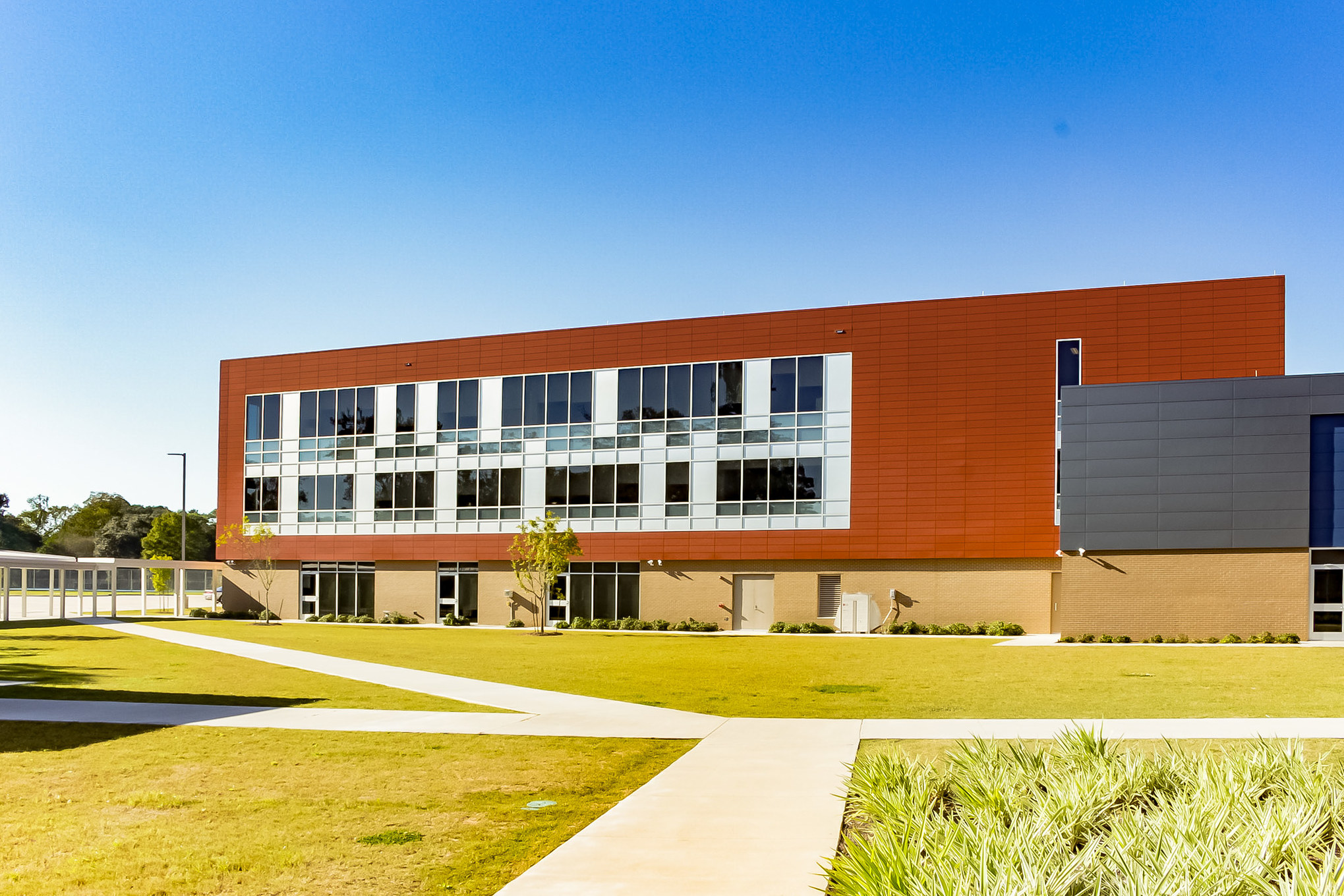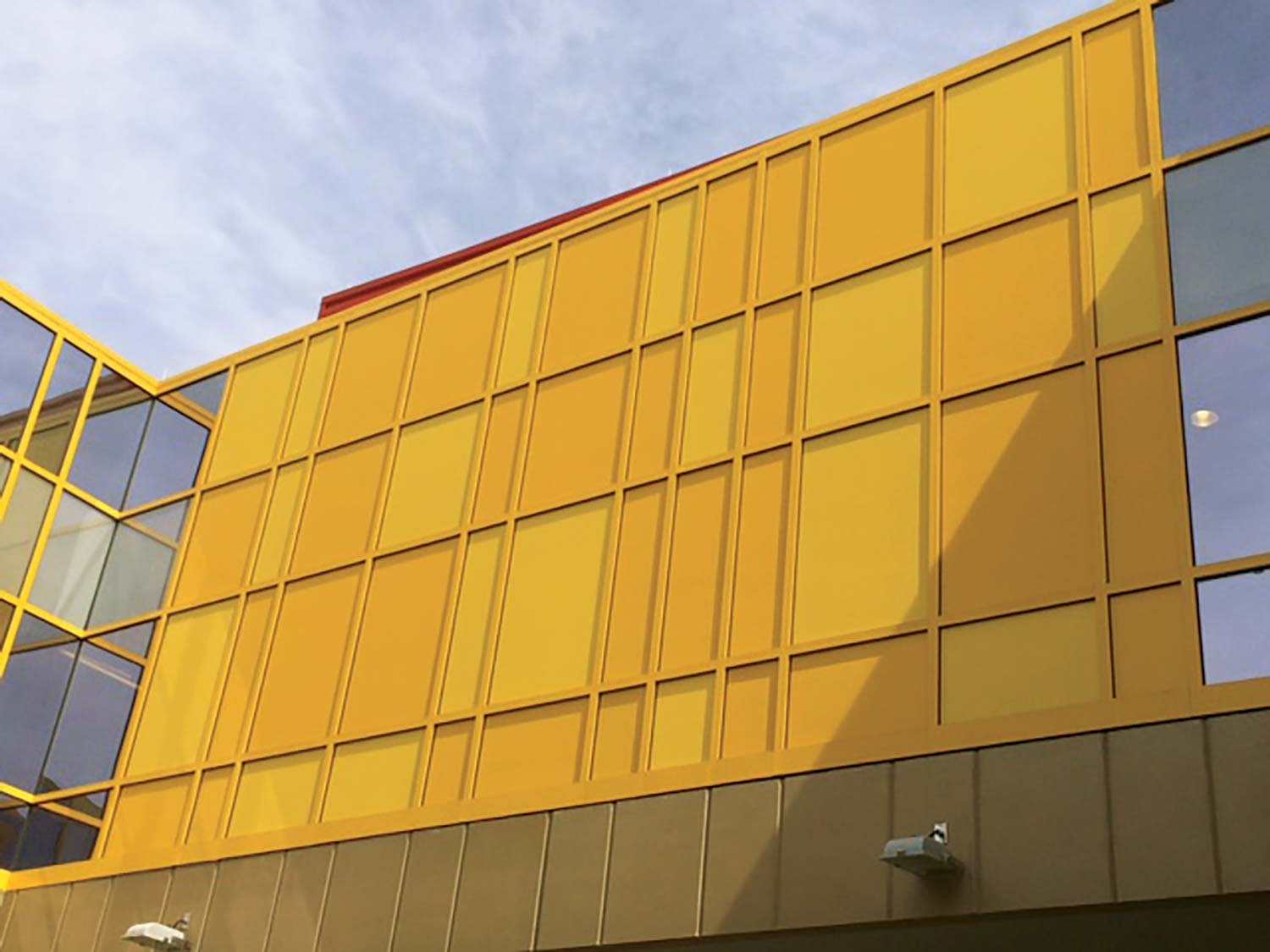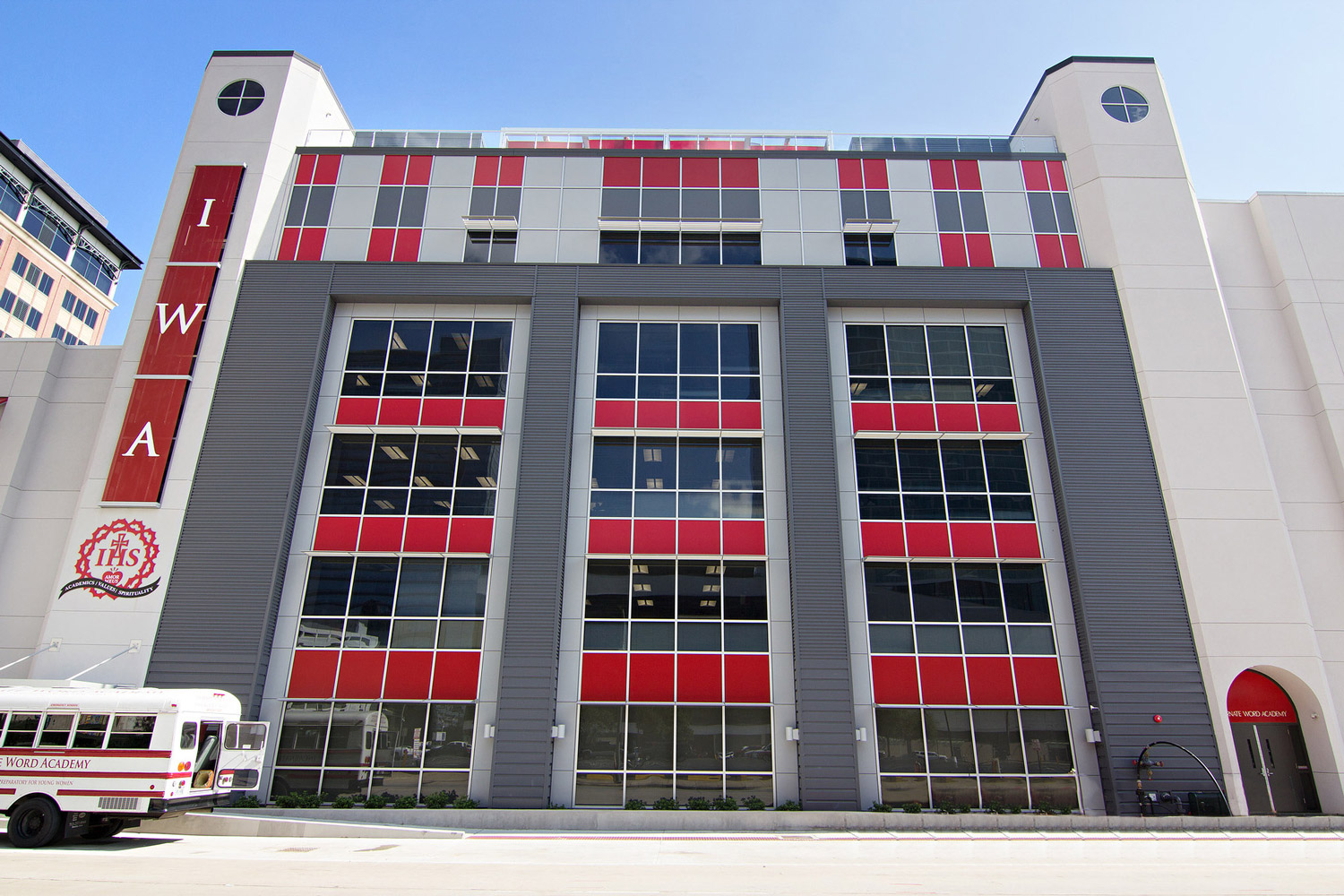Choosing the Right Panel Color for Your Building Design

Color is a unifying element in commercial building design. Whether it’s a new development or a style refresh on an existing structure, color is the finishing touch that brings a building’s design together. The panel color has to align with the building’s overall aesthetic and also perform under environmental stressors like UV exposure and salt spray.
A well-considered color choice can highlight architectural features, enhance brand identity, and contribute to the building’s energy efficiency, particularly in climates where heat absorption and fading are concerns.
That’s why it’s important to understand what color options exist for building panels and how to select the right one for your project.
Understanding Color Options
The color options for building panel colors depend on the type of material and finish that you choose. Kynar® on aluminum has the widest range of colors, so if you typically incorporate bold or unusual colors into your designs, you will find that standard or premium Kynar will have the colors that you want.
Custom matching is also available if you have a specific color for a particular design.
Available colors and finishes include:
Standard Kynar on Aluminum
Standard Kynar finishes on aluminum panels are high-performance PVDF coatings that are factory-applied to achieve long-lasting color and durability. These finishes are available in a curated palette of architectural colors that include on-trend colors and a range of neutrals, earth tones and metallics.
Kynar is a popular choice among architects because it offers historical colors that are ideal for matching historic buildings or meeting color requirements for a historic district.
Kynar panels also have great durability. The Kynar coating is applied in a controlled environment through a coil coating or spray application process, then baked on the aluminum surface to create a molecular bond.
This results in a finish that resists fading, chalking, corrosion and chemical exposure, making it ideal for demanding exterior environments.
Premium Kynar
Premium Kynar includes some eye-catching metallics that can make a design truly unique. Available premium Kynar metallics include:
- Zinc – Medium gray
- Silver – Light gray
- Dark Bronze Metallic – Dark bronze with black undertone
- Aged Copper – Green with tan undertone
- Champagne – Neutral tan metallic
- Weathered Zinc – Dark gray with cool undertone
If you have a particular color in mind for a design, color matching is available to help you get exactly the look you need.
Anodized Aluminum
Anodized aluminum is made by creating a controlled oxide layer on the aluminum surface through an electrochemical process. Unlike painted coatings, anodizing bonds the color into the metal itself, producing a finish that won’t chip, peel or flake over time.
This makes anodized panels a great choice for environments where abrasion resistance and longevity are critical. The finish is also highly resistant to UV degradation, meaning it maintains its look for decades with minimal maintenance.
Color options for anodized aluminum are generally more limited than painted systems but include a range of natural metallic tones like clear silver, bronze shades, black and champagne.
Factors to Consider When Choosing Panel Colors

When deciding on the panel’s color, there are a few considerations to keep in mind to ensure you make the right choice for your project.
Architectural Style
Architectural style should be a primary driver when selecting building panel colors for a new design.
Certain types of architecture are known for incorporating particular colors. Modern minimalism, traditional vernacular, industrial or contemporary mixed-use all have unique palettes.
For example, sleek, monochromatic tones like black, white and gray often complement modern and minimalist architecture, while warmer earth tones or muted metallics may better suit traditional or transitional styles.
The right color building panels can highlight structural lines, accentuate material contrasts and unify the façade with surrounding elements such as glazing, signage and site finishes.
Panel color also affects the perceived scale and proportion of a building. Darker shades can ground a structure and create bold contrasts. Lighter hues tend to open up a design and reflect more ambient light.
Texture and gloss levels matter as well. Matte finishes can soften the appearance of larger façades, while metallics add dimensionality and catch light dynamically. Color theory and architectural theory go hand-in-hand on building projects.
Branding and Identity
The exterior color scheme of a building is the first impression of a company or organization. That means color is more than just a design element. It’s a powerful visual tool for communicating brand values, professionalism and personality.
Building panel colors can align with corporate colors, complement a business logo or reinforce a brand’s identity across multiple sites.
For national brands, color consistency across locations can strengthen recognition and customer trust, while for local businesses, a distinctive color palette can set the building apart in a crowded visual landscape.
Local Environment and Climate
Local environment and climate also need to be considered when choosing panel colors.
In hot, sunny climates, lighter colors are often preferred because they reflect solar radiation and reduce heat gain, which can lower cooling costs and improve overall energy efficiency. On the other hand, darker colors absorb more heat and may be better suited for cooler climates where passive solar gain is beneficial.
UV exposure is another key factor. Buildings in regions with intense sun can experience faster fading and color breakdown if the building panels have a low-grade color finish.
Environmental conditions such as salt air exposure, urban pollution or industrial surroundings also influence color performance. For example, in coastal regions, salt spray can degrade finishes over time, so corrosion resistance is as important as color retention.
Certain colors, particularly metallics and mid-tones, may show staining or dirt accumulation less than pure whites or deep blacks, which is a practical consideration for maintenance and aesthetics.
Making color choices while considering climate and environmental demands will help the building’s appearance and performance hold up over time.
Reflectivity for Energy Savings and Sustainability
Reflective building panels, especially those with metallic finishes, play a strategic role in improving a building’s energy performance. These finishes are engineered to reflect a greater portion of solar radiation compared to standard matte or dark-colored panels.
By bouncing sunlight away from the building surface, reflective panels reduce heat absorption, helping to keep exterior walls cooler. This directly lowers the thermal load on HVAC systems, particularly in hot climates or on west- and south-facing façades that receive the most sun exposure.
Metallic finishes, such as silver, champagne or light bronze, often have high solar reflectance and infrared emissivity values, which means they not only reflect visible sunlight but also release absorbed heat more efficiently.
This dual function supports energy savings by minimizing heat buildup around the building envelope. These panels can also help meet energy codes and sustainability benchmarks like LEED or Title 24.
Choose The Right Color Building Panel For Your Next Project With Mapes

Now that you understand the importance of choosing the right color building panels, let the experts at Mapes help you find the perfect color for your project.
At Mapes, our panels come in numerous colors to help professionals achieve design success. With custom colors available, you can feel confident in perfectly matching whatever look you’re going for with ease.
Browse through the Mapes Selection Guide to see which product and color is the right fit for your project, or contact our team to learn more about custom colors and color matching.

